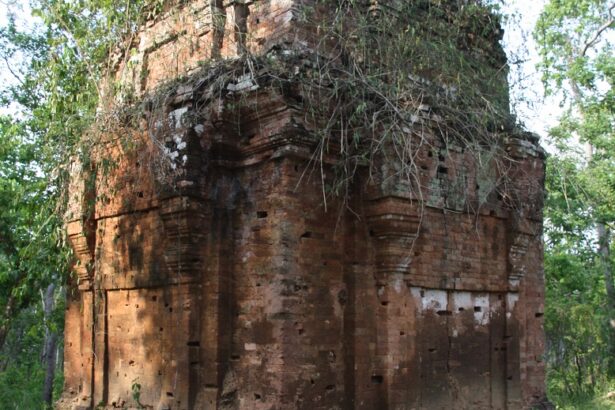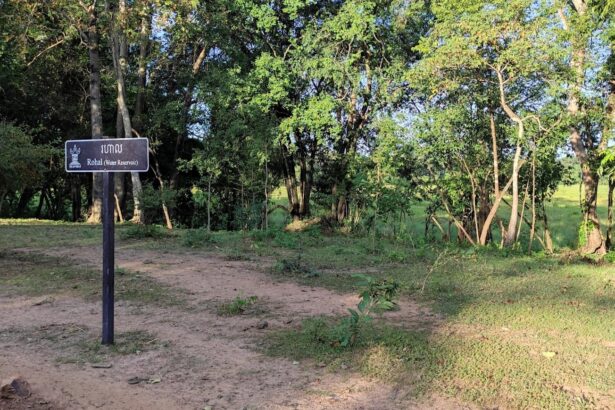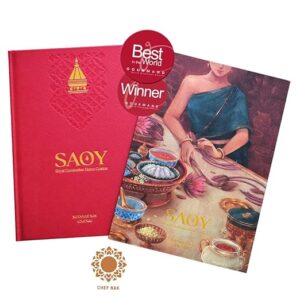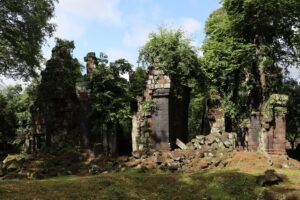
Chen Temple (ប្រាសាទចិន), a major temple at Koh Ker site, was constructed of lava stone (laterite stone) and sandstone during the 10th century and dedicated to Lord Vishnu. This temple was built in the Koh Ker architectural style and three towers were built on the same foundation, facing east. The middle tower is bigger than the other two and built of laterite, with ring-walls featuring Garuda with wings. And, there are also two libraries facing west. All three towers are in a dilapidated condition and have been restored. In front of the central tower on the left side at the entrance, there is an inscription with a long name of the temple servant. The three towers have double ramparts and many lines of inscriptions. In these two entrances, many statues of the characters in the story of Ramayana (Reamker) and Mahabharata were kept. At the west entrance, there are nine statues that are the main characters in the story of Mahabharata.
The Khmer language is called the Chen Temple (Chinese Temple) due to a misinterpretation of the fighting statue between VALIN and SUGRIVA from Ramayana (the famous sculpture of the monkey brothers Vali and Sugriva fighting each other in an episode from the Ramayana, and now one of the glories of the National Museum in Phnom Penh). Chen Temple Inscription K-182 mentioned that this temple was originally named Kry Pati (គ្រីបតី). A combination of word Kry (គ្រី), meaning Princess Lakshmi which it can be called Srey Lakshmi or Lakshmi, while Pati mean Tep, the husband of Lakshmi.
Prasat Chen along with Prasat Banteay Pir Choan and Prasat Thom forms the Trinity temples of the site. Both Prasat Chen and Prasat Banteay Pir Choan are equidistant from center of Prasat Thom. The Chen temple has three rectangular towers made of laterite facing east through the sandstone door frame and decorated with false doors at the other corners. Each tower has a stairway from the east with string-walls featuring Garuda with outstretched wings, a rarely used motif in Khmer art, but one which confirms that the temple was dedicated to Vishnu. The three towers are built on the same ground, made of laterite, with a central tower larger than the side towers. The west-facing two brick libraries collapsed almost completely. It has protected by a double laterite rampart, 2 meters high. It has Gopuras to the west and east by a double (outer) rampart, in rectangular which cut by two gopuras (gates) in square (made of brick) with a main door (made of sandstone) on the east and the other on the west. The north main door of the east gate has the inscription K-182. The second rampart had an entrance from the east, and the first rampart (inner) was made of laterite, with entrances from the east and west. The laterite floor of the two gates (one on the east and other one on the west). One pond is located northeast of the second rampart and the other is a large pond southeast of the second rampart, measuring 100 meters by 50 meters. While, a long courtyard extends from the north to the south is located northeast of the second rampart.
The layout of the Chen temple is similar to that of the Pram temple, with three towers running on the same axis, but these towers are made of laterite, with open doors facing east and false doors in three different directions, and the highest central tower. All three towers are built on a rectangular laterite floor, and there are three stairs from the east and one from the west. According to Chen temple inscriptions, K-182 is dedicated to Vishnu named Sripati or Krypti. As at the site, a statue was founded with only the body near the elbow piece, with four arms, probably Vishnu’s hands. Therefore, we can first conclude that the central tower that houses the statue of Vishnu, not the Shiva linga.
Lintel (ផ្តែរទ្វារ) of the south tower, according to the ancient Bhagavata scriptures (គម្ពីរភគវត្តបុរាណ), the 10th Canto (កណ្ឌទី១០) states that many nagas or serpents lived in the Kalindi River, making the water poisonous, making it impossible for cows and humans to drink. This news was heard when Preah Krishna (a dark-skinned person) came to kill the nagas to save people. Khmer artists often adhere to two principles in carving nagas: odd heads (ក្បាលសេស) and single head (ក្បាលគត់គូរ). The odd head of the serpent is called Shesha “នាគអនន្ត” or Vasuki “នាគវ៉ាសុគី ឬពាសស្រកី ឬសេសៈ” referring to the immortal serpents, while the serpents with the single head is a symbol of death, after Krishna killed. The lintel of the central tower depicts the Garuda (mythical bird of Indian legends, the mount of Vishnu and enemy of the nagas) standing with its arms outstretched, like human standing on two swans (Swan, literally known as Hang a word derived from Pali and Sanskrit, is the vehicle of Varuna God) facing each other, connected by a bow arche (ក្បាច់ដងធ្នូ).
The temple had sculptures depicting the fight between the monkey brothers Valin and Sugriva, and sculptures of Rama, Lakshmana and Hanuman, in its eastern gopura. Behind the main towers, nine pedestals adorn the inner western Gopura, depict the last scene of Kurukshetra of Mahabharata; the dual between Bhima and Duryodhana, with Pandavas and Krishna in audience, in ronde-bosses technique which was rare and unique to Koh Ker.
Located in Koh Ker village, Sraryorng commune of Kulen District, the Koh Ker style temple was built in the 10th century during the reign of King Jayavarman IV, dedicated to Lord Shiva of Hinduism. The temple is situated 2.5 kilometers south of Koh Ker village, 200 meters southwest of artifact reservoir (រហាល ឬបារាយណ៍) and 150 meters west of road from Koh Ker village to Sraryorng village.
Gallery
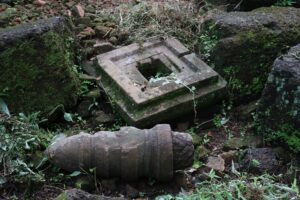 Chen Temple © Beyondangkor.org
Chen Temple © Beyondangkor.org 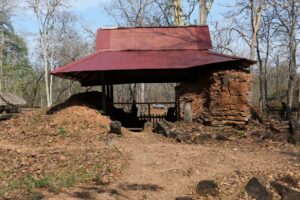 Chen Temple © Beyondangkor.org
Chen Temple © Beyondangkor.org 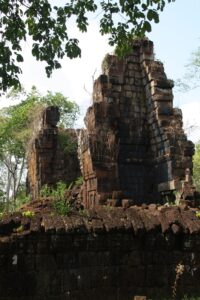 Chen Temple © Beyondangkor.org
Chen Temple © Beyondangkor.org  Chen Temple © Beyondangkor.org
Chen Temple © Beyondangkor.org 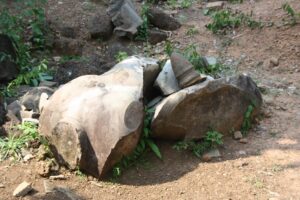 Chen Temple © Beyondangkor.org
Chen Temple © Beyondangkor.org  Chen Temple © Beyondangkor.org
Chen Temple © Beyondangkor.org  K.182 at Chen Temple © Beyondangkor.org
K.182 at Chen Temple © Beyondangkor.org 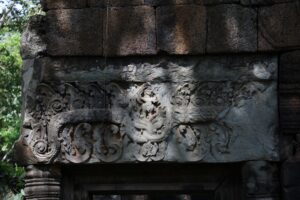 Chen Temple © Beyondangkor.org
Chen Temple © Beyondangkor.org 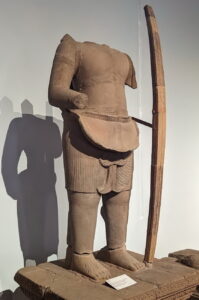 Chen Temple © Beyondangkor.org
Chen Temple © Beyondangkor.org 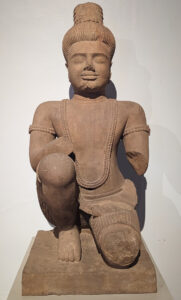 Chen Temple © Beyondangkor.org
Chen Temple © Beyondangkor.org 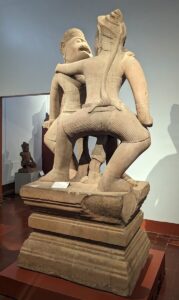 the fighting statue between VALIN and SUGRIVA from Ramayana of Chen Temple © Beyondangkor.org
the fighting statue between VALIN and SUGRIVA from Ramayana of Chen Temple © Beyondangkor.org 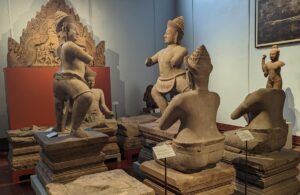 Chen Temple © Beyondangkor.org
Chen Temple © Beyondangkor.org 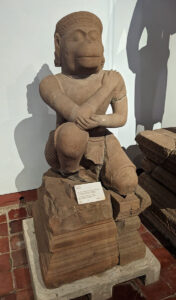 Chen Temple © Beyondangkor.org
Chen Temple © Beyondangkor.org 
